- Home
- Digital History Exhibit
- Bishop Loughlin's Vision and the Vincentian Mission
Digital History Exhibit
- Bishop Loughlin's Vision and the Vincentian Mission
- Catholic Education
- Places of Worship
- Charity and Service
- Brooklyn Campus History
- Queens Campus History
- Staten Island Campus History
- Manhattan Campus History
- Long Island and International Location History
- Student Organizations
- The Campus Experience
- Student Publications
- The Early Colleges
- The Newest Colleges
- The Professional Colleges
- The Libraries and Archives
St. John’s was founded at the request of the Right Rev. John Loughlin, the first Bishop of Brooklyn. Since the first day of classes began on September 5, 1870, St. John's University has transformed from a small college in Brooklyn into a major university with multiple campuses in New York and around the world. In addition to inspiring an institution that continuously developed over the past one hundred and fifty years, Bishop Loughlin himself was a storied and integral person at the college during its early years, until his death in 1891. With his own hands, he turned the first spade of dirt, breaking ground for the original campus at Lewis Avenue in Brooklyn in 1868; he helped lay the cornerstone of the first building, College Hall, in 1869; the cornerstone of St. John the Baptist Church, the spiritual center of the Brooklyn campus, in 1888; the cornerstone of the St. John’s Seminary in 1888; and he attended and spoke at the early commencement exercises of the college, among other events and Masses. In addition, many members of St. John’s College and St. John the Baptist parish spearheaded the Bishop’s Golden Jubilee Ceremony.
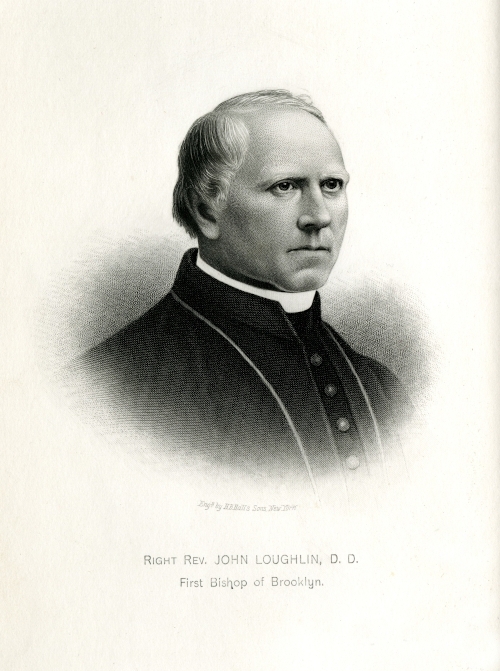
“The Diary” is a written account of the history of St. John the Baptist Church and St. John’s College, maintained by the Vincentian Fathers up until 1892. This phrase recorded in the diary: “where the youth of the City might find the advantages of a solid education and where their minds might receive that moral training necessary to maintain the credit of Catholicity” has been echoed through each of the one hundred and fifty years of St. John’s University history. The essential mission has never been altered – a solid education and moral training in the Catholic tradition.
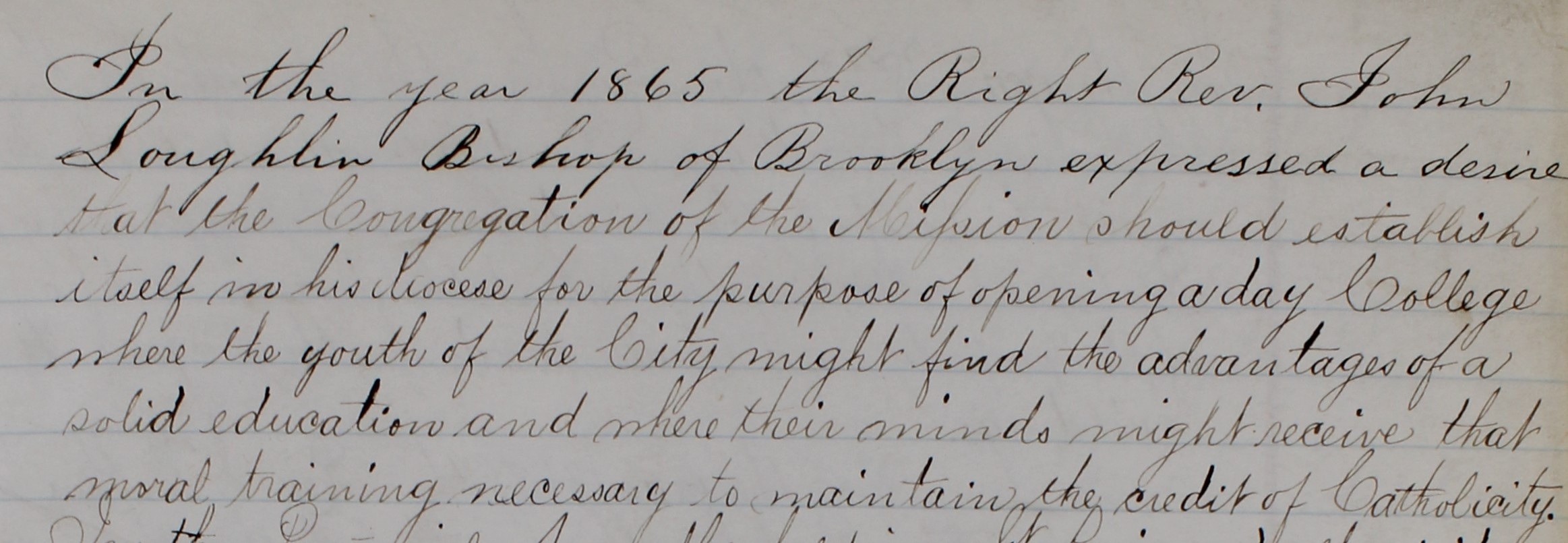
"In the year 1865, the Rt. Rev. John Loughlin, Bishop of Brooklyn, expressed a desire that the Congregation of the Mission (the Vincentian Fathers) should establish itself in his diocese for the purpose of opening a day College where the youth of the City might find the advantages of a solid education and where their minds might receive that moral training necessary to maintain the credit of Catholicity."
The Brooklyn Daily Eagle often reported on the progress of St. John’s University, from our founding, to the annual commencement ceremonies, and the accomplishments of our alumni. This article published in February 1868 captures the excitement felt throughout Brooklyn, not only by the Catholic population, but also by “many friends of education and citizens of public spirit” who looked forward to the founding of a new college in their city. It also highlights the proposed mission of the university, even before construction began, as “an educational institute of the highest class” which would benefit society as a whole, as the alumni would make a positive impact in their communities around the world.
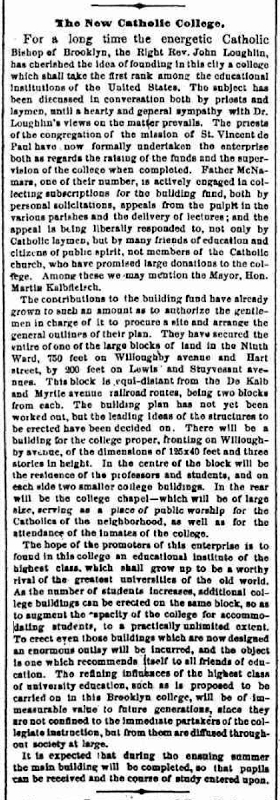
"The New Catholic College.
For a long time the energetic Catholic Bishop of Brooklyn, the Right Rev. John Loughlin, has cherished the idea of founding in this city a college which shall take the first rank among the educational institutions of the United States. The subject has been discussed in conversation both by priests and laymen, until a hearty and general sympathy with Dr. Loughlin’s views on the matter prevails. The priests of the congregation of the mission of St. Vincent de Paul have now formally undertaken the enterprise both as regards the raising of the funds and the supervision of the college when completed… the appeal is being liberally responded to, not only by Catholic laymen, but by many friends of education and citizens of public spirit, not members of the Catholic church, who have promised large donations to the college. Among these we may mention the Mayor. Hon. Martin Kalbfleisch.
The contributions to the building fund have already grown to such an amount as to authorize the gentlemen in charge of it to procure a site and arrange the general outlines of their plan… In the rear will be the college chapel—which will be of large size, serving as a place of public worship for the Catholics of the neighborhood, as well as for the attendance of the inmates of the college.
The hope of the promoters of this enterprise is to found in this college an educational institute of the highest class, which shall grow up to be a worthy rival of the greatest universities of the old world….The refining influences of the highest class of university education, such as is proposed to be carried on in this Brooklyn college, will be of immeasurable value to future generations, since they are not confined to the immediate partakers of the collegiate instruction, but from them are diffused throughout society at large…"
The five members founding members of the Board of Trustees of St. John’s College applied to New York State for an official charter for the college in 1871. The charter simply stated that, “The corporate name of the Society is to be “St. John’s College Brooklyn.” and that “The object for which the Society is formed is The education of young men.”

This photograph includes many members of the early St. John’s faculty, including four Presidents of the college: Moore (President at the time of the photograph), Sullivan and McHale (former Presidents), and Cloonan (future President). The photograph was taken by Rev. John J. O’Byrne, October 1, 1922. They are standing in front of St. John the Baptist Church at St. John’s College, Brooklyn.
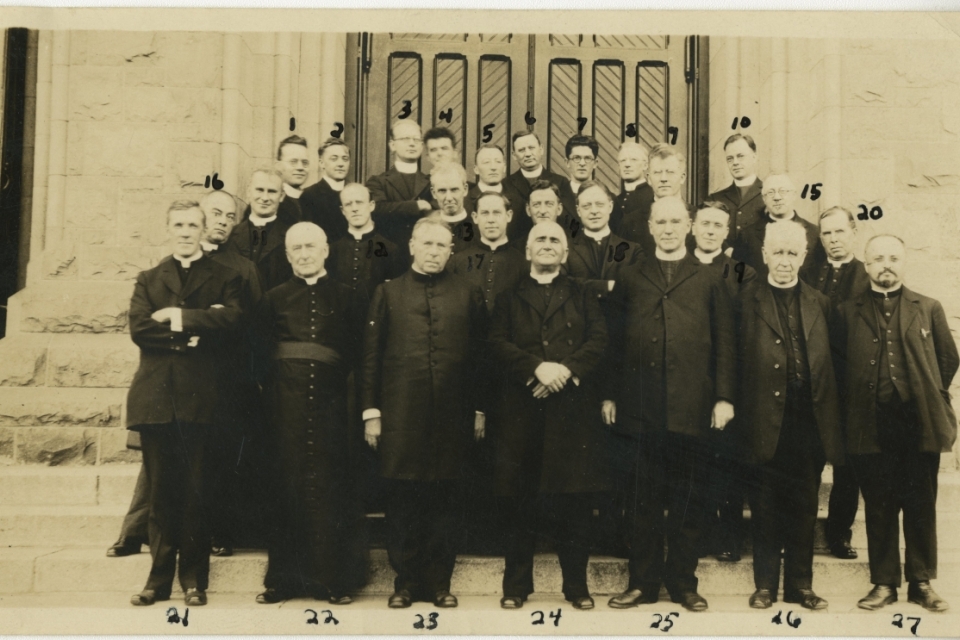
1. Father Fred J. Russell* 2. Father Joseph Noonan* 3. Father Charles Faivre* 4. Father Edward Doherty* 5. Father Thomas Maher* 6. Father Charles Gorman* 7. Father Thomas McCallen* 8. Father John Ewens 9. Father Thomas Carter 10. Father John Naughton 11. Father Thomas Judge 12. Father Francis Connor 13. Father William Hoctor* 14. Father Thomas McFadden* 15. Father James Kennedy* 16. Father John Corcoran* 17. Father James Hafner 18. Father John Cloonan* 19. Father James Kelly (an Irishman, but of the Province of Paris, now in Denmark) 20. Father Robert Lennon 21. Father Thomas Finney (of the Western Province) 22. Father John Moore* 23. Father Patrick McHale (Assistant to the Superior General)* 24. Father Francis Verdier (Superior General) 25. Father Frederick Maune (Visitor of the Eastern Province) 26. Father James Sullivan (Director of the Sisters of Charity, Western Province)* 27. Father Adrien Bayol (Superior of Shanghai House)
*members of the St. John’s faculty
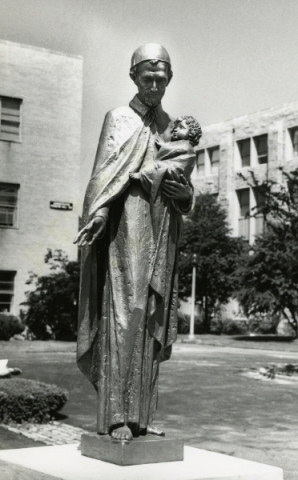
Founded in the Vincentian tradition, the earliest faculty of St. John’s University were comprised of members of the Vincentian community. The first sixteen Presidents of St. John’s University, from 1870 to 2014, were all Vincentian priests as well. The Vincentians, also known as the Congregation of the Mission, or the Lazarists, followed in the footsteps of St. Vincent de Paul through acts of charity and personal service to the poor. They also placed a high value on education, which ensured the proper training of future Vincentians and improved the wider community. These values are reflected in the curriculum and the many charitable programs offered by St. John’s University. A number of visible reminders of the Vincentian mission surround members of the St. John’s community, such as this statue of St. Vincent de Paul on the Queens campus.
The student-produced St. John’s College yearbook also paid homage to the Vincentian spirit; in the prologue of the first volume yearbook in 1918, the authors explain that the name Vincentian was chosen “to honor the noble men who stand for our Alma Mater…to venerate those priests of God, who have trained our intellects and wills, who have taught us the way of culture and truth and salvation…” The 1933 Vincentian yearbook included this illustration of St. Vincent de Paul. The students wrote, "The ideals and purpose of Catholic Education may well be expressed by the words inscribed on the seal of St. John's College: "Religio, Scientia, Humanitas." To these ideals St. Vincent de Paul dedicated his life; to these ideals his followers, the Priests of the Congregation of the Mission dedicate their lives; it was for these ideals that St. John's College was founded."
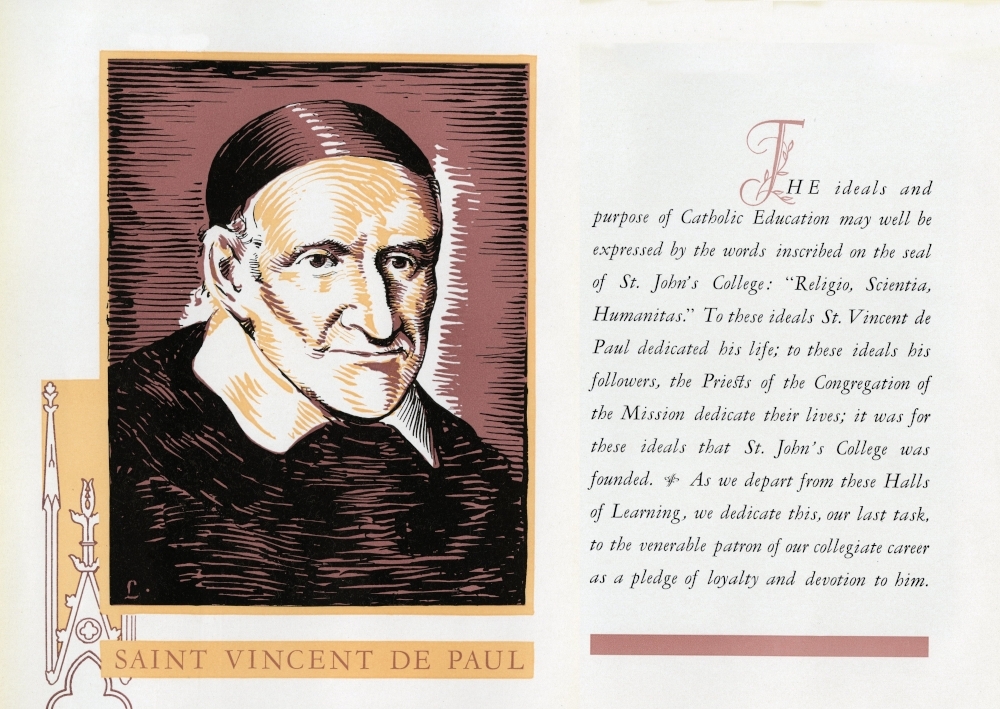

The 1880-1881 course catalog was the first catalog to include a description of the mission of St. John’s College. A “sound mental and moral training” is emphasized again here, as well as the belief that students should be taught critical thinking skills instead of “cramming.”
"This Institution, conducted by the Priests of the Congregation of the Mission, is chartered under the laws of the State of New York, and invested with the powers and privileges of a University. Its aim is to give a sound mental and moral training to its students; and accordingly, its course of studies is comprehensive and judiciously arranged. Believing that the “cramming system” is both false in principle and very injurious to the young mind, the Faculty of the College seek rather to direct the pupil in his studies, to make him think and investigate for himself, than to burden his memory with a load of indigested matter, at the expense of intellectual development. This system produces thoughtful, self-relying young men – an object that in an educational institution should be sacrificed to no other."
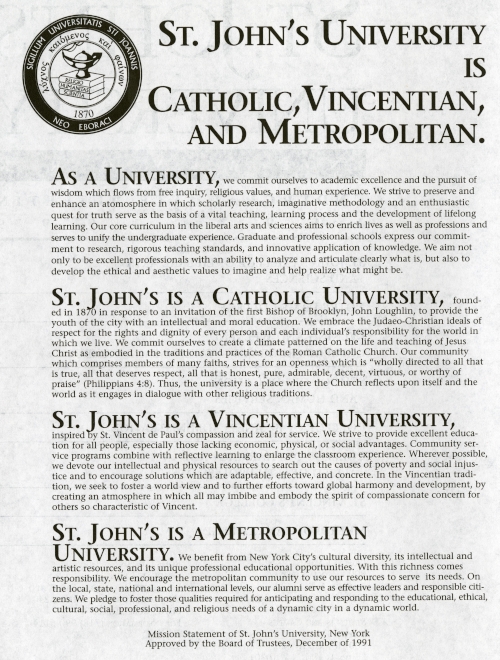
The Mission Statement, 1991
The Board of Trustees adopted the first official Mission Statement in December 1991. This statement emphasized the Catholic, Vincentian, and Metropolitan nature of St. John’s University. In 2015, the Board of Trustees added “Global” as a fourth element of the Mission Statement, reflecting the importance of an international outlook to prepare students as ethical leaders in an increasingly global workplace.
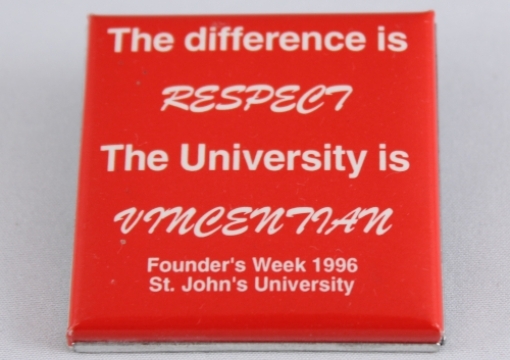
The legacy of St. Vincent de Paul is frequently celebrated at St. John’s University. The first Founder’s Week was held in January 1995 during the university’s 125th anniversary. The Founder’s Week celebration is a tradition that continues today, and includes lectures on the Vincentian mission and legacy, service opportunities, and the annual Vincentian Convocation, where members of the St. John’s community who exemplify the values of St. Vincent are honored for their service.
